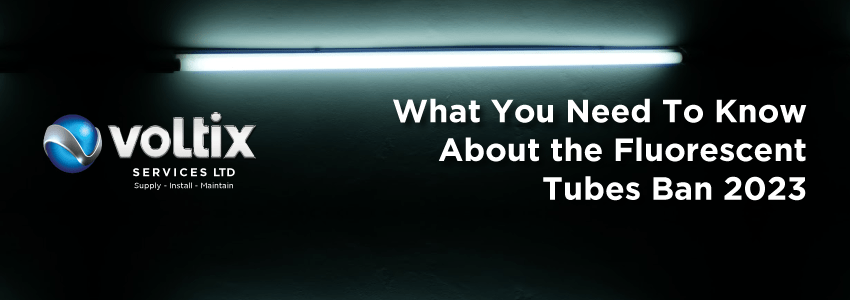Turn Regulatory Changes Into Opportunity
As of September 2023, fluorescent lights are being phased out in the UK. This comes as a result of 2022 amendments to the Restriction of the Use of Hazardous Substances (RoHS) Directive. What do you need to do to be RoHS compliant? Although many businesses have made the move to LED alternatives, there are still many fluorescent lights and lamps in use around Britain today.
This means many businesses will have to add upgrading light systems to their compliance checklist. This doesn’t need to be daunting. Use our quick guide below to find out everything you need to do and work with Voltix, the problem-solvers, for simplified compliance.
What is the RoHS Directive and why have fluorescent lights been banned?
The RoHS Directive is a vehicle for phasing out and restricting hazardous or toxic substances that are bad for the environment and for public health in the UK and EU. Fluorescent lighting came into the spotlight for containing mercury, which is more energy intensive and poses an environmental and health threat.
Which lights have been banned in the UK?
The widely-used T5 and T8 fluorescent lamps, as well as compact fluorescent lamps, are the subject of immediate focus. As of September 2023, the phase-out process has started and it is expected that they will be removed from the market by February 2024.
What are your responsibilities under the RoHS Directive?
Business owners are required to remove and replace T5 and T8 fluorescent lights, source and install alternative lighting systems, and responsibly dispose of fluorescent lights, lamps, and bulbs. They must be disposed of as hazardous waste or through structured recycling to minimise the chance of toxic substances being released into the environment.
The benefits of moving away from fluorescent lights for businesses
The best alternative to T5 and T8 fluorescent lights are LED alternatives. Making the move as soon as possible not only ensures you are compliant; it also holds a range of additional benefits for businesses both today and into the future.
LED lights are better for the environment
Mercury is a toxic pollutant that doesn’t degrade and poses a safety risk when it enters the food chain. Fluorescent lights are also more energy-intensive than LED counterparts. LEDs use 30 to 40% less energy than fluorescent lights and are a simple yet highly-effective way to reduce emissions.
Costs savings
Improved efficiencies come with a cost savings benefit. LEDs reduce expenses in other ways too. They have a significantly longer lifespan than fluorescent lights, which means lower costs on replacements and maintenance callouts. With the high price of energy, it is expected that the change to LED lighting can yield a return on investment within three years of installation, as well as improved operational efficiencies.
Adjustable light
The light intensities and colour temperatures of LED lights can be set according to your needs, so you can optimise lighting to specific applications.
Darkness and business disruption
On 1 February 2024, T5 and T8 lamps will become unavailable in the UK. Existing stock can still be purchased until that date, but it is reasonable to expect limited availability of stocks. Moving over to LED systems prevents the possibility of interruptions and the easy availability of replacement bulbs and control gear (which has already been phased out).
Simplify the Shift to LED Lighting
Work with Voltix Services for guidance on lighting systems upgrades. Our team has the experience and expertise to tailor lighting solutions to your operations to ensure systems are a match for your business. We also work with you to ensure general lighting and emergency lighting requirements are met by the upgrades.
Plan and prepare as early as possible for the change. Contact Voltix Services today for more information.

